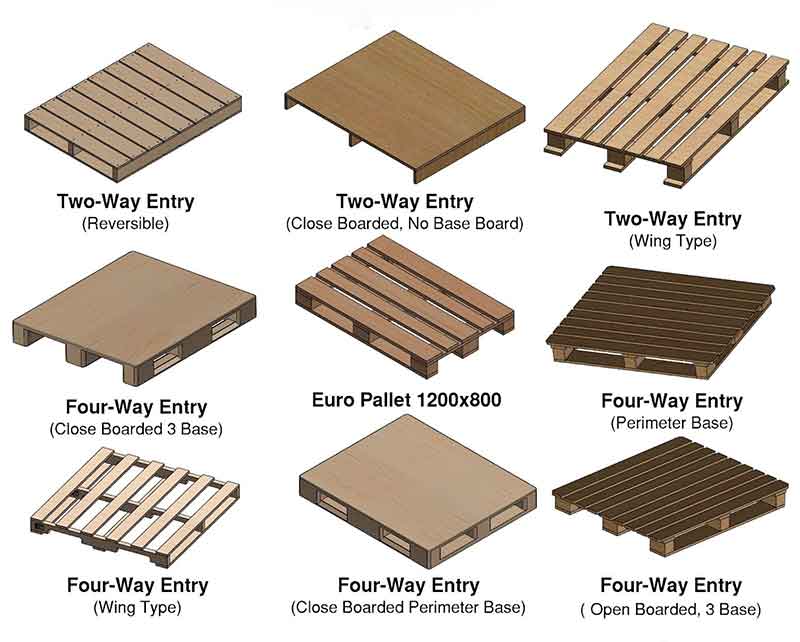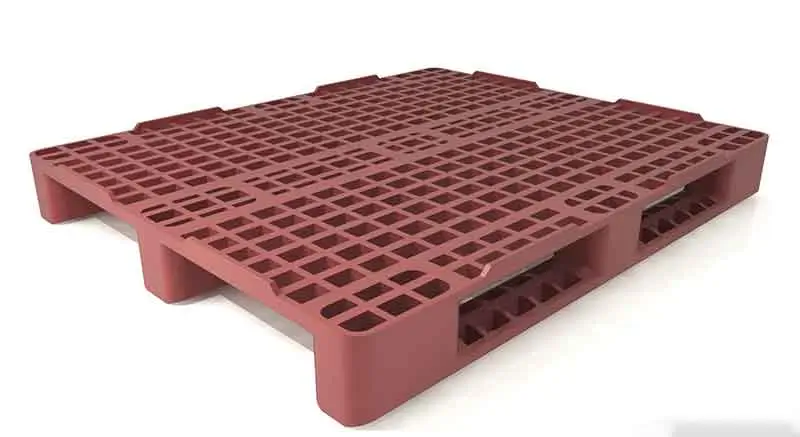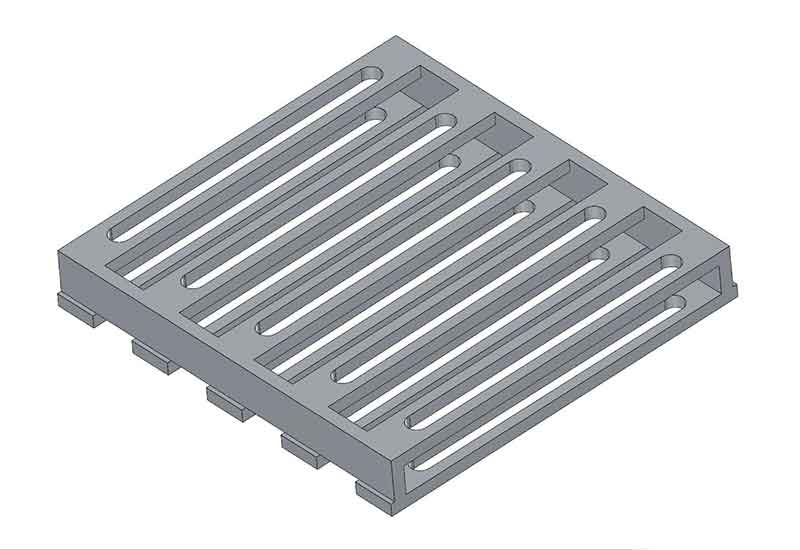This guide covers the essentials of international pallet shipping. Read on to explore topics such as:
What is pallet shipping?
Pallet shipping refers to stacking goods on a flat, durable platform to simplify handling, storage, and transport. These platforms, known as pallets, work efficiently with forklifts and pallet jacks, allowing carriers to move cargo quickly and safely.
Typically, standard pallet sizes vary by region. In the U.S., the most common dimension is 48” x 40”, while Europe often uses the 1200 x 800 mm Euro pallet.
Purpose of shipping a pallet
Businesses rely on pallet shipping to consolidate multiple items or bulky, heavy products into one manageable unit. Pallets keep the load stable, simplify lifting and stacking, reduce the chance of damage, and speed up warehouse operations.
Most freight carriers also offer better international pallet shipping rates and maximize container or truck space when shippers use pallets.
Pallet types for international shipping
1. Wooden pallets
Wood remains the preferred material for pallet shipping worldwide. A standard 48” x 40” wooden pallet can support up to 4,600 pounds, making it perfect for both full truckload (FTL) and less-than-truckload (LTL) shipping.
- Best for: Heavy goods, general freight, furniture, industrial materials
- Watch out: Wooden pallets must meet ISPM-15 regulations when crossing borders. They need heat treatment or fumigation to prevent pest contamination. Without the proper stamp, customs may reject the shipment.

2. Plastic pallets
Plastic pallets are lightweight, resistant to moisture, and easy to clean, making them a favorite in industries with strict hygiene standards.
- Best for: Food, pharmaceuticals, and clean-room goods
- Downside: They cost more upfront and aren’t as sturdy under heavy loads.

3. Metal pallets
Metal pallets, made from aluminum or steel, deliver durability and longevity. They handle extreme weight and resist damage, which is beneficial for defense and aerospace logistics.
- Best for: Military shipments, auto parts, high-value or oversized equipment
- Not ideal for daily retail shipments or budget-sensitive freight. Their weight and price can significantly raise your international pallet shipping rates.

4. Corrugated (Cardboard) pallets
Metal pallets, made from aluminum or steel, deliver durability and longevity. They handle extreme weight and resist damage, which is beneficial for defense and aerospace logistics.
- Best for: Military shipments, auto parts, high-value or oversized equipment
- Not ideal for daily retail shipments or budget-sensitive freight. Their weight and price can significantly raise your international pallet shipping rates.

How to choose the right pallet
Always check if your destination country has pallet-specific import rules to avoid delays and unexpected fees. For instance, Europe requires certain industries (like chemicals) to use CP-certified pallets.
Also, choose a pallet type that aligns with your cargo’s weight, handling method, and shipping route. Using the wrong pallet or over-palletizing can lead to wasted space, added charges, and even shipment refusal.
How much does it cost to ship a pallet?
When calculating the cost to ship a pallet, you need to consider more than just the base rate. Factors like shipment weight, pallet dimensions, shipping distance, and delivery speed play a role. Naturally, heavier or bulkier loads raise your total shipping cost, especially in international transport.
In addition, you should consider accessorial charges, which include liftgate service, residential delivery, customs clearance, and storage fees.
Typical cost ranges:
- Domestic (U.S.) LTL: $100–$500 per pallet
- International: $500–$2,500+ per pallet, depending on the destination and type of service
At ASLG, we tailor freight solutions that balance speed, cost, and compliance so your shipment gets where it needs to go without the stress.
- A 53-foot truck can carry up to 26 standard pallets when single-stacked. If your cargo allows for double-stacking, that number jumps to 52 pallets.
- Depending on the pallet type and loading configuration, a 20-foot container typically holds 11 to 12 pallets.
- A 40-foot container usually fits 22 to 24 standard 40″ x 48″ pallets.
If your products are sturdy and stackable, double-stacking is one of the easiest ways to lower your international pallet shipping rates by making the most of your container space.
Want a deeper dive into container planning and pallet types? Check out [this article] for more insights.
How to prepare your pallet like a pro?
Once you’ve finalized the transportation mode and Incoterms with your freight forwarder, you can prep your pallet like a pro.
Step 1: Pack your goods securely
Start with sturdy, undamaged boxes. Double-walled corrugated boxes work best for heavier items. Fill any gaps with cushioning materials like foam inserts, air pillows, or kraft paper. Leaving space can cause shifting and damage during international pallet shipping.
Step 2: Seal everything tight
Use heavy-duty tape designed for freight. Polypropylene tape (2.9 mils or thicker) works for most loads, but if you’re shipping heavy or high-value items, PVC tape offers stronger adhesion. Seal all seams and reinforce vulnerable corners.
Step 3: Pick the right pallet
Go for a solid, undamaged pallet. A 4-way entry pallet (accessible by forklift from all sides) makes loading easier. Don’t cut corners here; a broken pallet can ruin your shipment.
Step 4: Stack and secure the load
Stack boxes neatly, with heavier ones at the bottom. Align edges to maintain stability. Use steel or polyester strapping to keep everything in place, but avoid over-tightening.
Wrap the pallet from top to bottom using stretch film—multiple layers help contain the load. For extra stability, place corrugated pads on the top and bottom of the stack to distribute weight and prevent box slippage.
Step 5: Label clearly
Every pallet needs clear, visible labeling. Stick address and customs labels on forklift-accessible sides, and include shipment IDs like “1 of 5,” “2 of 5,” etc. If customs requires paperwork, place it in a waterproof pouch and attach it securely.
Not sure which pallet type or packing method fits your shipment? Contact ASLG! We make international pallet shipping easier, faster, and more reliable from day one.
Cheapest Way to Ship a Pallet Internationally
ASLG leverages a network of 300+ global carriers to offer optimized routes, competitive pallet shipping rates, and end-to-end support. From smart stacking strategies to real-time tracking, we help you ship efficiently without surprises.




